33 Proven Tips to Save Money While Traveling in Europe
You have come to the right place if you want to know how to backpack Europe on a budget and save money on Europe travel. Depending on your travel style, having a strategic plan in place is always a good idea for saving extra euros.
I was lucky enough to get to travel all across 27 European countries before turning thirty. Plus, also visiting Russia, Ukraine, and Belarus. Over the course of my journeys, I ate my way through Spain and Italy, walked the hallowed grounds of most significant battlefields, and soaked up the beauty of some of the most beautiful cities on the planet.
Traveling to a foreign country (even within the EU) often comes with new mistakes, though, and many of them relate to money. Figuring out the cheapest ways to travel in Europe, finding good and cheap places to stay in Europe, picking the best hostels in Europe was a trial-and-error type of effort. There are sometimes things that pop-up unexpectedly – whether it’s on the flight over or a few weeks into your trip.
How to Save Money While Traveling in Europe
After learning from my own experiences, I wanted to make some suggestions to hopefully help you avoid similar missteps. These helpful, money-saving hacks could save you time, money, and frustration, and guarantee that you don’t walk away from your next adventure wishing you’d done things differently.
While my experience, as well as this post, focuses primarily on Europe, you can easily use some of the travel tips below for ensuring a problem-free travel experience pretty much anywhere in the world. This step-by-step travel guide will give you the best money-saving tips and help you save money while traveling in Europe, travel more frequently, and to more places. Let’s dive right in!
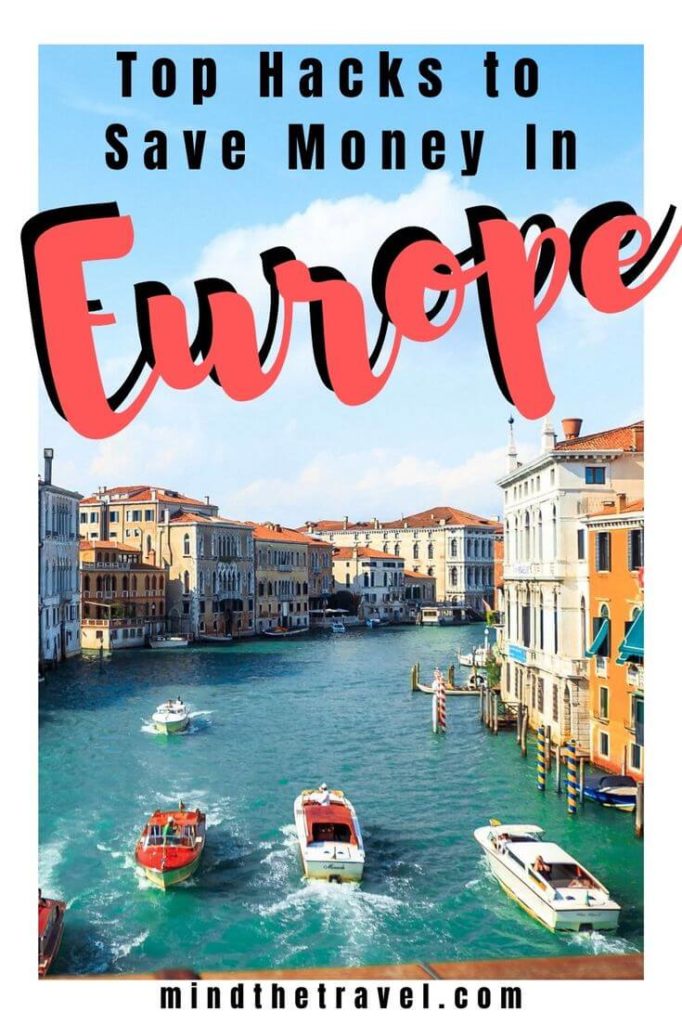
Planning Your Trip to Europe
1. Score the Cheapest Flight
Chances are airfare is going to be one of your biggest travel expenses. If you want to save money by avoiding travel agencies, your first step is to research your options. Spend some time planning your trip with a site that compiles your choices. Travel search engines compare flight deals available at multiple airline tickets sites, travel agents, and then sort them by price.
I’m a frequent flyer with both domestic and international airlines. In general, Google Flights and Kayak both have a user-friendly interface that allows quickly find budget carriers once in Europe, track prices and see how much you can save by departing a day later or earlier.
Expedia and Skyscanner are good at finding cheap flights to Europe. You can download their apps for searching flights to any destination on any date or even for a whole month from a city. Skyscanner can also find you trains in the UK.
Once in Europe, you can take advantage of the Schengen Agreement that allows you to move freely across most of the continent without the need for a visa. Because of this, flying can be your go-to option if you’re from the United States. Take long- and short-haul flights in Europe to reduce the time you spend traveling and maximize your time.
2. Save Money On Budget Airlines
Budget airlines will easily save you some greenbacks, but with so many out there it is still important to know which one to choose.
Here are the Budget Airlines Serving Europe:
| Airline | Hub(s) |
| Aer Lingus | Dublin, Shannon, Cork, Belfast |
| AirBaltic | Riga (Latvia) |
| AirBerlin | Berlin Tegel Airport and Düsseldorf |
| Blue Air Bucharest | Bacău (Romania) |
| Brussels Airlines | Brussels |
| CityJet | London City Airport |
| Condor | Multiple German cities |
| EasyJet | Gatwick, Stansted, Luton, Southend, Basel, Berlin, (SXF and TXL) Madrid, Dortmund, Geneva, Paris |
| Estonian Air | Tallinn |
| Flybe | Birmingham, Manchester, Exeter |
| Germanwings | Berlin Tegel, Cologne Bonn, Dortmund, Hamburg, Hannover, Munich, Stuttgart |
| Helvetic Airways | Zürich, Bern |
| Jetairfly | Brussels, Liège, Ostend (Belgium) |
| Norwegian | Oslo, Bergen, Copenhagen, Stockholm, Alicante, and London |
| Pegasus Airlines | Istanbul Sabiha Gökçen, Adana, Antalya, Ercan, Ankara, Adnan Menderes |
| Ryanair | London, Dublin, and several other cities |
| SmartWings | Prague (Czech Republic) |
| Transavia | Amsterdam, Rotterdam, Eindhoven, Groningen |
| TUIfly | Berlin Tegel, Cologne and other major German cities |
| Vueling | Barcelona, Rome–Fiumicino |
| Widerøe | Bergen, Bodø, Oslo, Sandefjord, Tromsø |
| Wizz Air | Budapest (Budapest Ferenc Liszt Airport) |
3. Avoid Unfair Exchange Rates and Hidden Fees
Before you leave, it is important to have a definitive plan for managing your money in Europe. While the exchange rate on ATM withdrawals is almost always better versus what you would pay to an exchange service in the airport (an average difference of between 3-7%), ATM fees are increasingly expensive.
Keep in mind that some banks and credit unions offer reimbursements for ATM fees charged by other banks. Some banking institutions cap these fees, often at $10 per month. Therefore, when it comes to large cash withdrawals outside of the States, getting a no-foreign-transaction-fee debit card might be your best bet.
Capital One, Charles Schwab, and Discover offer such cards. Meanwhile, Charles Schwab offers unlimited ATM reimbursements worldwide. Be sure to do your own up-to-date research about the type of credit card you need and notify your bank that you’ll be traveling at least one week prior to departure.
4. Get a European SIM
Obviously, roaming charges and accessing the internet abroad can get ridiculously expensive when using y phone. You should get either an unlocked phone in Europe or own a dual-band GSM phone in order for a European SIM card to work. Check with your carrier before venturing out whether your phone can accept SIM cards from different networks.
Alternatively, if your phone is locked, I suggest getting a mobile WiFi hotspot which costs around €50. In terms of making free phone calls to friends and family – you’ve got iMessage and FaceTime (if you both use Apple phones) or try the WhatsApp (free to download). Skype offers fantastic rates so I highly recommend their audio and video call services. The other app that I find very useful in terms of saving money on your phone bill is Viber which is also free to download.
5. Travel Off-Season
It should come as no surprise that summer in Europe is the high travel season. Firstly, you will come across unreasonable prices, completely booked hotels, crowded museums, and the endless wait time. Secondly, this is the least authentic Europe experience you can possibly have. Why? There will be no locals to mingle with during the summer. They mostly escape the suffocating city heat and flee to beaches and the countryside.
This is particularly true for urban destinations (including Rome, Paris, and Zurich), but also through to smaller towns and countries in Central and Eastern Europe. With higher demand and big-ticket travel expenses like airfare and lodging on the rise, your trip is certainly going to be filled with elbow nudging and toe-tapping as you test your patience.
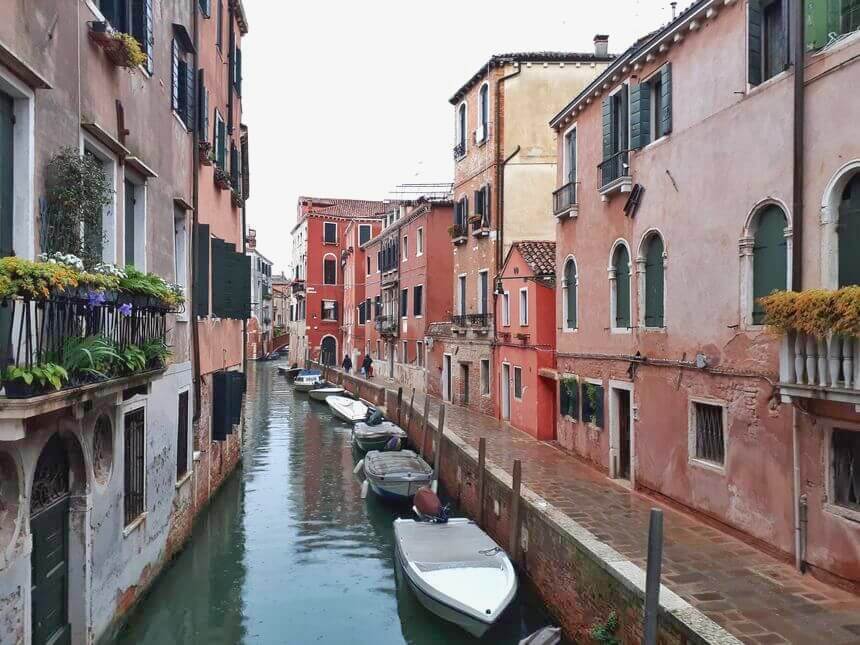
So, when is the best time to go to Europe? In a nutshell, any of the months outside of summer. Just rule them out. If you are still going to visit Europe in summer, wisely choose your next destination if you want to avoid the crowds. Big cities are extremely busy during the summer and early winter. Visit during the shoulder and low seasons and you will be fine. Along with Christmas flights, New Year’s Eve is typically one of the most expensive times of year to visit Europe, which is, of course, true for anywhere in the world.
If your travel dates are flexible, consider traveling during the shoulder seasons or take a vacation in places for which summer is actually off-season.
6. Explore “Free Things to Do in [type your destination].”
About six years ago, I began experimenting with the concept of a cash-free living to travel more frugally. It’s actually a fun challenge – and one that helped me discover a staggering number of free things to do in various cities.
For example, on a given day I wasn’t allowed to spend any money on anything, no matter what. In other words, I had to use public transport instead and could only eat one meal a day, usually dinner, as well as spend money on paid attractions. I was doing my best to tighten my budget and minimize unnecessary spending. Boy, it was hard!
Ok, I’m not telling you to eat just one meal a day, but finding cheap (and free) things to do to dodge boredom can be extremely rewarding both culturally and financially.
7. Focus On a Particular Destination
With so many cool places to visit in Europe, it’s pretty easy to get overwhelmed with the endless possibilities. Berlin, Munich, Paris, Rome, Prague, Amsterdam… the list is sure to be endless. Depending on your interests, it is important to give your trip a focus and stick to popular destinations. Love strong ale and theater? Go to London. History buff or culture junkie? The Eternal City is going to be your next destination. Want to get off the beaten path? Central/Eastern Europe is likely to surprise and delight you.

While there are many alternatives to consider, ranging from where to go in Europe to the sheer number of options and things to see, do, and experience, one thing is for certain: you can’t do it all at once. And even if you can (assuming this is your once in a lifetime journey), you shouldn’t. I would highly recommend exploring Europe on multiple trips at various times in your life – depending on what takes your interest at that given time. Believe me, that it’s true.
Here are a few sample itineraries to get you on your way:
Where to Go in Europe
8. London > Paris > Marseille > Genoa > Florence > Rome
London is known to be the most visited city in the UK as well as an incredible place to start your Europe adventure. Especially if you are traveling from the United States and looking to save money on flights. If you’re traveling long-haul, carefully select your connection airports and stopover countries to avoid paying huge taxes. From London, you have the choice to either travel by train or air to Paris and make your way down to Marseille, cross the border with Italy, and finally to Rome.
9. Berlin > Dresden > Prague > Vienna > Bratislava > Budapest
If you’d prefer to indulge in beautiful and historic Central European cities, Berlin is a great place to start. With so many low-cost flights from all major European cities, Berlin is probably one of the best value cities to visit in Europe. I recommend you have a peek at my 2-Day Berlin itinerary.
Berlin offers a wide range of excellent value budget accommodation-from apartments to luxury hostels. In terms of free things to do, from visiting Deutsche Guggenheim (free on Mondays) to visiting the Reichstag or simply strolling down the historic Unter den Linden from Brandenburger Tor (Brandenburg Gate) to Museum Island. There is so much you can do in Berlin without spending a dime.
From Berlin, make your way to Dresden, the traditional capital of Saxony, followed by a leisurely train journey through Vienna, Bratislava, and onward to Budapest, Hungary. Visiting these five countries requires at least two weeks if you travel at a slower pace.
10. Moscow > St. Petersburg > Helsinki > Stockholm > Copenhagen
This long itinerary covers the underrated Russian cities of Moscow and St. Petersburg, as well as gives an opportunity to visit some real Northern beauties. Starting in the Russian capital, be sure to spend a few days discovering the city with a very turbulent and diverse past. While Moscow feels like a worldly cosmopolitan city, it retains its historical interior and never fails to impress visitors with its’ Orthodox churches and the grand chambers of underground metro stations. Here’s how to spend one week in Moscow.
From there, take the high-speed train to St Petersburg and restore the long-forgotten image of Russia’s imperial glory – back to the days of Peter the Great and Catherine the Great. From there it’s just a short train ride to Helsinki in Finland. Onwards to Stockholm, you will be baffled by the beauty of Scandinavia that offers a beautiful wilderness with glaciers in the north, forests, and lakes in the south.
End your trip in Copenhagen, the capital of Denmark. This is one of the world’s most eco-friendly cities that boasts gorgeous architecture, remarkable museums and galleries, charming canals, culturally diverse neighborhoods, and a fairytale-like old center with a Tivoli amusement park.
How to Find Good And Cheap Accommodation in Europe
11. Use Benefits of a Sharing Economy
Here’s a confession: I rarely stay in hotels in Europe. They’re often way too pricey for someone traveling around Europe alone and provide very little in the way of actual local flavor. I prefer to stay in a city and live like a local. For me, that usually starts with finding an affordable apartment in the neighborhoods where the locals actually live. Here’s where Airbnb comes in handy.
They have a fabulous range of places to stay and allow you to explore your destination before you even set foot in the city. If you search your area with the map tool, you can easily click and drag the map to move it around. Wherever you stop, their search ranking algorithm will show you the available listings and prices. The listings with the lightning bolt icon mean they don’t require approval from the host and are available for instant booking.
As much as I love staying in hostels, I love to have the comfort and privacy of an apartment, particularly when I am traveling for a few weeks in a row. You can get exceptionally good value for Airbnb in expensive cities like London, Paris, and Rome. If you are new to Airbnb, sign up using this link to get $35 off your first booking.
12. Look For Rentals With the Kitchen
An advantage of a fully equipped kitchen and most Airbnb apartments is that you can cook your own meals without having to eat out for every meal, and paying to eat in your room at an exorbitant markup. Not only does that quickly add up and leave you way over budget, but it also deprives you of one of the most authentic European experiences: grocery shopping!
13. Find the Best Hostels in Europe
Hostels are frugal traveler’s dream and are no longer mean disheveled, smelly holes with no facilities, dirty sheets, and insect infestation. You needn’t be afraid of staying in hostels because they are changing, and there are plenty of hostels in Europe which are cleaner than an average budget hotel! Hostels aren’t just for young backpackers either, I regularly stay in hostels and as a thirty-something solo traveler, I can attest that centrally located hostels in big cities in Europe are perfectly safe.

I’ve stayed in literally hundreds of hostel beds in Europe, so now I consider myself somewhat of an expert knowing how to pick a good one. In fact, hostels all over Europe have changed considerably in the past years. They are pretty much everywhere – even in the smallest of towns, there are usually several options to choose from. For finding the best hostels in Europe, I recommend Hostelworld, which has the most comprehensive selection of hostels and other backpacker accommodation to choose from.
14. Try Something Different
While in large cities I have had good experiences with finding cozy little hostels, campgrounds can be a lifesaver in the countryside. Although campgrounds are usually on the outskirts of towns, which makes access difficult, unless you have a car, these offer great value for money at the height of the season. This is a great way to step out of your comfort zone as well!
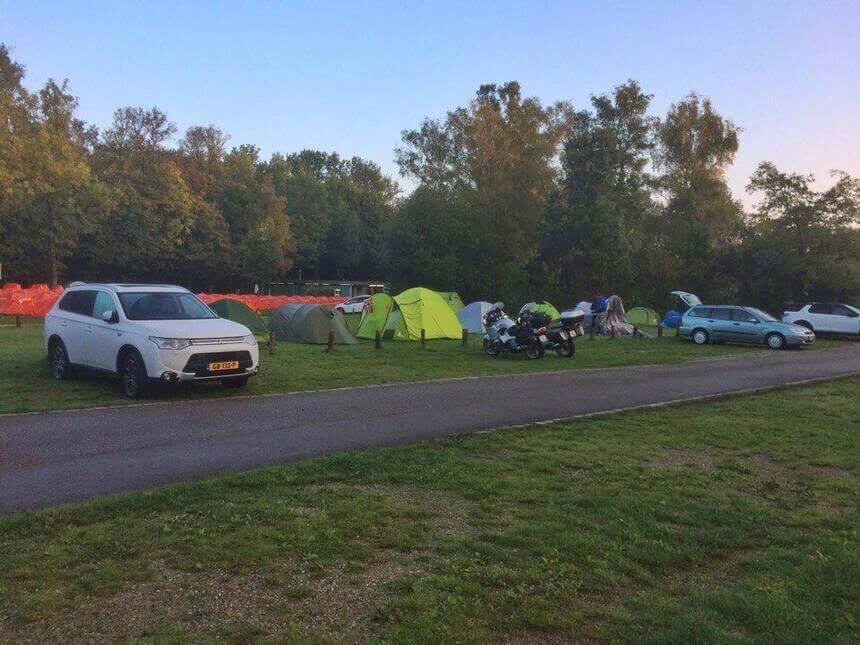
If you travel in the countryside and intend to embrace the slow travel mindset, staying at a farm for a few days or renting a house in rural areas could be your best bet. Farm stays and vacation rentals have become popular lodging options around Europe. They are usually far cheaper than hotels in the long run and allow you to cook in your own kitchen or a common kitchen if you wish so. There is nothing like a sampling of great local foods from a market after many days of eating at restaurants or outdoor cafés.
15. Stick to Family-Run Businesses
When heading South, take advantage of staying in smaller family-run businesses. These are less popular options and range from small family-run hotels to family-owned restaurants and tour operators. If you want the best deal that combines both the price with comfort, stick to family-run businesses that deliver highly personalized service and excellent value for money.
How to Travel on a Budget Across Europe
16. Avoid Taxis and Overspending
Taxis in Western Europe are expensive and often unnecessary since you can always hop on a bus or take a train that will get you pretty much anywhere. Find out if the airport where you’re landing has a train link or shuttle bus before getting into a taxi. You’ll save significantly. This is also true while traveling within the city limits. At the same time, you’ll find Uber in cities at reasonable rates, so that’s definitely a go-to option.
17. Take Public Transit
Metro systems in European cities are incredibly efficient and go everywhere. No matter where you are, chances are you’re never more than 200 yards from a Metro station.
For example, Berlin’s public transportation is comprehensive and it’s always cheaper than a cab. Oftentimes it takes you over, under and through the city and connects the city center with the outskirts and beyond.
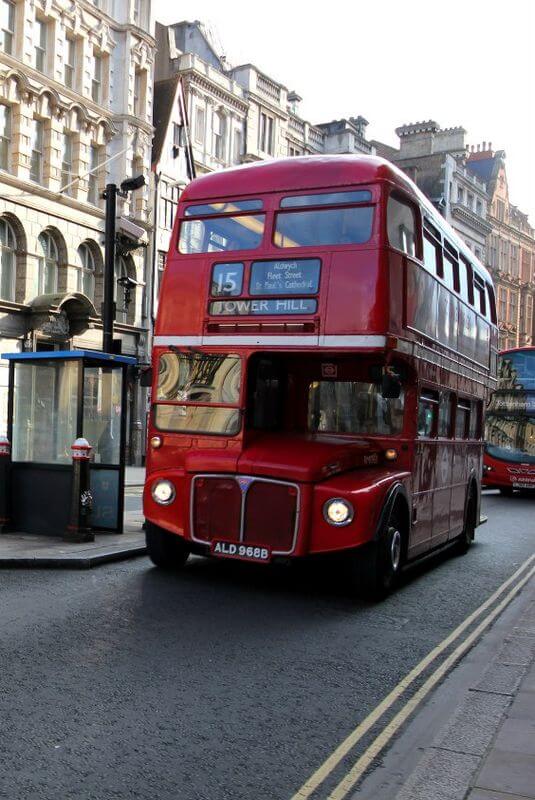
When staying multiple days in a particular city it may be wise to invest in a multi-day pass.
Thus, when visiting London, use an Oyster card as it comes fully charged with credit which you can spend as you travel on the Tube, buses, DLR, Thames Clippers river bus service, London Overground, and most National Rail services in London. Travel passes offer value for money and allow you to drastically save money while traveling in Europe.
18. Walk As Much As You Possibly Can
You’re in Europe, pal! You MUST explore these windy narrow streets, cobbled alleyways, and spectacular Medieval castles, in which you’re eating, sleeping, and shopping. Stay central and save yourself loads of money by reducing the time you spend commuting each day.
So walk to dinner. Walk to the next attraction. Walk for no apparent reason other than you’re there and it’s a unique chance to take in all of the beauty and charm Europe has to offer. Soak it up, because you may never be here in this magnificent place ever again.
Oh, and you avoid a cab ride on your way back, of course.
19. Travel Through Europe by Bike
Exploring Europe on two wheels is something I can’t recommend highly enough. With so many cycle routes (like the Danube Bike Path and Dieppe–Paris cycle route), bike shops, and cozy little towns, Europe is a great place to start your own Tour de France. In addition, you can sign up for the Warmshowers website – a community of individuals who are passionate about cycling and lovely locals who are willing to accommodate them. Win-win!
If you’re not into exploring rural Europe, why not taking advantage of renting a bike that allows you to get around the city quickly. You can expect to pay around €20-25 euros per day, but if you rent a bike for a week, prices will be much lower.
20. Take the Train
Train travel is surprisingly easy, quick, and comfortable to get around Europe. If you can plan your Euro trip ahead of time and spend some time researching your destination’s rail options, there are some great savings to be made from booking train fares.
Plan your rail trip in Europe using the Deutsche Bahn website and also check out the Voyages SNCF. For example, you can go from Würzburg to Berchtesgaden for €29 currently, Frankfurt to Amsterdam or Paris in less than 4 hours from just €35 or from Copenhagen to Hamburg in 4.5 hours starting at only €27.
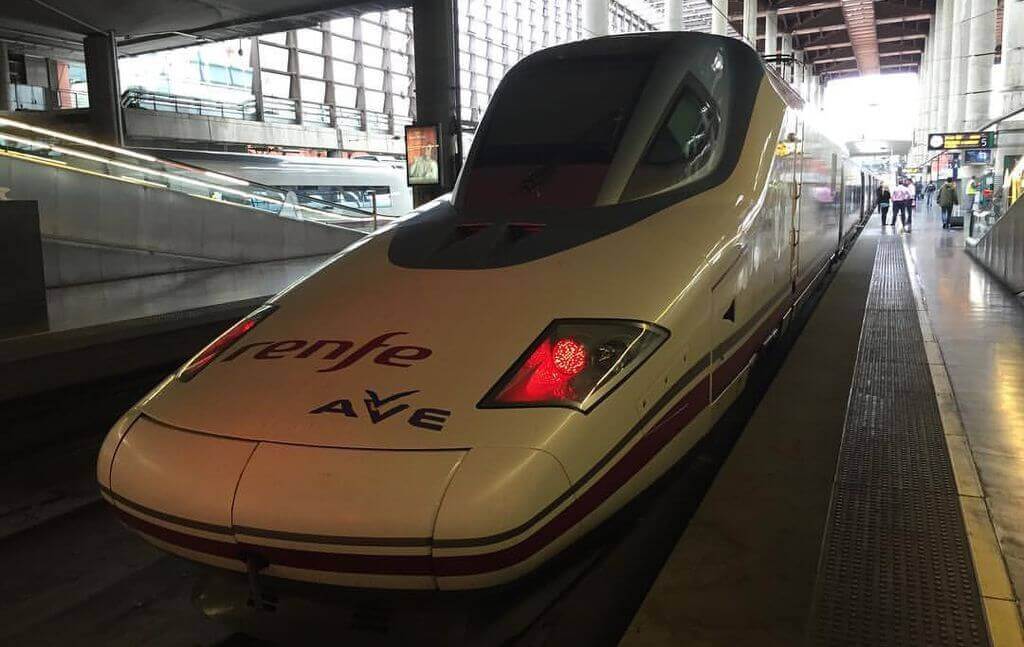
If you’re planning a multi-country travel itinerary consider buying a Eurail Pass before you leave. This is the most cost-effective and flexible option and it is great if you will be visiting many different places. Just make sure to buy it well in advance, so you have time to receive the pass in the mail.
Another option for traveling Europe by train is to catch a train to a border city and switch train services when you crossing the border. Traveling in a neighboring country will generally be more expensive if you buy one ticket instead of two separate tickets.
21. Find a Rideshare or Offer Rides
For those not yet in the know, rideshare is one of the most effective ways to travel both short and long-distance for less. You’ll find a fleet of car-pooling companies across Europe that caters to frugal travelers and allow you to save money by spending only on the cost of travel. That said, you can easily find a ride that’s considerably cheaper than a bus or train ticket.
Similar to Airbnb where you can rent locals houses and apartments, BlaBlaCar and Carpooling allow you to reduce transport costs by sharing rides with others in their own private vehicles. Also, many drivers use BlaBlaCar and Carpooling to give up free space in their car in exchange for help with the cost of gas, making it a great eco-friendly way to travel.
Ridesharing is an excellent resource for all budget travelers out there.
22. Consider Buying an All-Inclusive City Pass
In many European cities such as Paris, London, Rome, Vienna, Prague, Berlin, Barcelona, Marseille, etc, you can get an all-inclusive city pass. It usually lets you visit a number of attractions for free and/or use the transit system for a fixed number of days.
Some city passes come with additional benefits and perks that often include a free hop-on hop-off bus tour of the city, a free riverboat cruise, discounts on tours and restaurants.
These passes make the most financial sense in cities that aren’t very compact or pedestrian-friendly, where you’d otherwise be spending a lot of money on public transportation each day to get around.

Read Next: Lessons I’ve Learned From Traveling
The other criterion for these passes to make sense financially is if you had already planned on doing a lot of intensive sightseeing or “cramming” within a short period of time. Some passes only work out cheaper if you visit at least 5 different sights each day.
If you had originally planned on taking things more slowly and then decide to buy a pass, you will feel compelled to rush around sightseeing at an unnatural pace to get your money’s worth from the pass.
One of the less obvious benefits of these passes is their ability to save you precious time and improve your productivity, by allowing you to bypass long queues at ticket counters.
Passes can usually be purchased at airports, online at their official websites, or at other locations around the city.
The validity period of a pass may vary but it’s common to get 2-day, 3-day, and 5-day passes. After the last day, the pass will expire and become useless. This, of course, puts pressure on travelers to cram as much as possible. Discounted passes may also be available for youngsters and kids.
How to Eat On a Budget in Europe
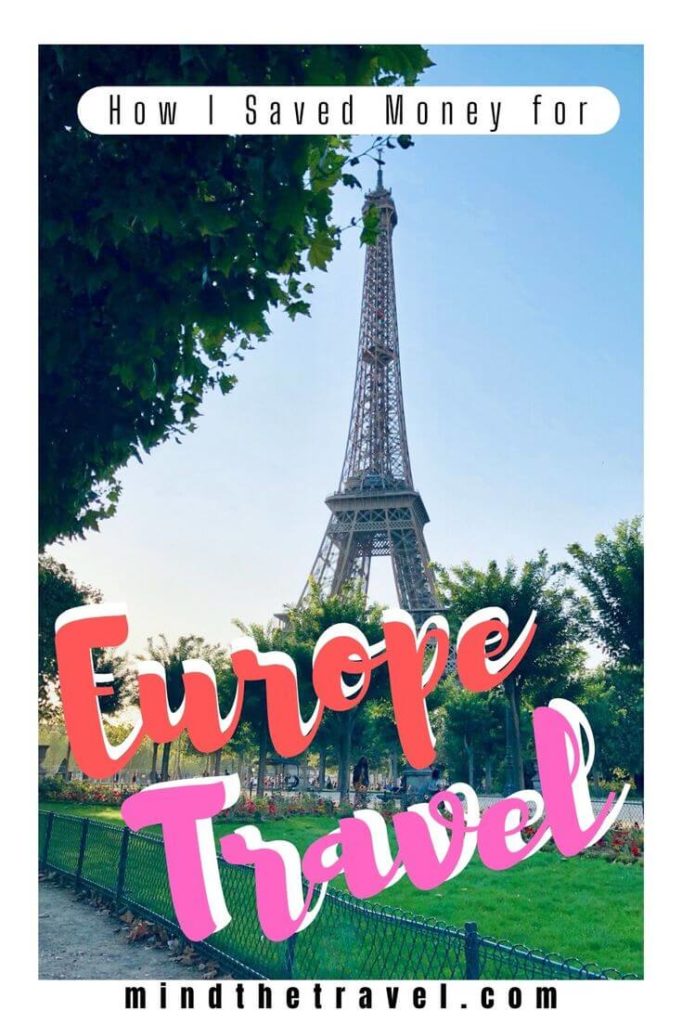
23. Buy Your Groceries European-Style
To avoid outrageous restaurant overcharges, visit a local grocery store and put together a meal. Shopping for food that’s good for your wallet at supermarkets, small groceries, and farmers’ markets, will save you a good deal of money on food while traveling in Europe. Melted cheese, sliced fresh tomatoes with oregano, lettuce leaves, roast beef on fresh bread make for a wholly filling sandwich that will set you back just a few euros.
In many grocery stores in Europe (especially in Scandinavia) you’ll not only find ready-to-eat sandwiches and salads but complete entrées that can be heated up in the oven (if your accommodation has one) or sometimes served hot in-store. Grocery stores in Brussels and Stockholm, among others, offer substantial, cheap and delicious prepared meals.
24. Hit the Local Food Markets
Pretty much all cities and even small villages have one or more food markets where you can buy fresh fruits, vegetables, cheese, meat, and fish. The permanent markets, operating year-round at the same location typically have small eateries that serve authentic local and regional specialties for a fraction of the price of a restaurant. On any day you’ll always find the best selection early in the morning, just after the market opens. However, some markets keep late hours.
For example, in Paris, where the food culture is particularly important, most Parisians shop for fresh ingredients daily. There are Marché des Enfants Rouges, Marché d’Aligre, Rue Montorgueil, and Marché Bastille to name a few. I saved a lot of euros buying fruits, cheese, and olives at Marché Barbès in the 18th arrondissement. Ask the hostel/apartment owner or reception staff where they shop because they know where the bargains are.
25. Look for Set Meals (menu of the day)
Save up to 50% on food by finding restaurants that offer midday set meals. These usually include two or three courses followed by a dessert and coffee. Keep in mind, during the lunchtime menus are always cheaper. You can choose from a fixed-price menu, or the menu of the day – menu del día (Spain), plat du jour (France), menu fisso (Italy).
26. Find Out Where Students Eat
Benefit from a thriving student scene in Leuven, Paris, Bologna, Prague, London, as well as in many other European cities by eating at cheap eateries and cafés catering to students. No matter what kind of food and drink you’ve got an appetite for, you’ll find something to your liking in student cities in Europe. Do a little research before traveling to Europe and find the best value meal deals. Don’t forget your ISIC card if you are still a student to get some extra discounts.

27. Make Sure you Know How Much To Tip in Europe
While tipping etiquette across Europe can vary from one country to another, you should definitely know the basics, especially if you’re from the United States. The reason is that my American readers are used to automatically tipping 15 – 20 percent in restaurants. In fact, restaurant staff does not expect this much in most European cities.
To make things clear, in France, for example, rounding up the bill to the nearest euro or adding one euro on top of the bill is considered sufficient. Tipping by credit card is considered somewhat undesirable because it’s unlikely that your waiter will see any of it. Instead, prepare a few small bills in the local currency and leave it on the table or hand a tip directly to a waiter after your bill has been settled.
28. Have a Picnic in the park
This is one of my favorite money-saving tips for making any trip to Europe more affordable. And come on, who doesn’t love a picnic on a nice summer day? Grab some crusty baguettes, cheese, fruits, and some cold cuts, take in the action and just delight in how differently people live their lives in other countries.
Great spots are in front of famous landmarks, nice shady parks, beaches or along the river banks. My Paris picnic backdrops tended to the Champ de Mars and the imposing Eiffel Tower. You can make these as simple or as full-on as you like. Check the laws & regulations about alcohol use and maybe you can include a bottle of wine or some beers.
29. Utilize the Tap Water
Pretty much everywhere in Western and Central Europe, the tap water is drinkable. So save yourself some money, and save Earth from plastic pollution, by taking a reusable water bottle traveling with you.
Most people in Austria, France, and Switzerland receive good quality drinking water that is safe to drink. Furthermore, Italy, Germany, and Belgium have public taps where you can refill your bottle for free. Also, you can ask for tap water in restaurants. If you didn’t specifically ask for it, waiters will always bring you an expensive bottle of water.
What is the Cheapest Way to Travel in Europe
How to save time and hassle of queuing and skip the line for popular European attractions? In a nutshell, it is always wise to book tours and activities in Europe ahead of your arrival. Too many travelers wait until they’ve left home to make reservations, only to find that tours are sold out.
There are several options when it comes to building a trip and planning activities. Firstly, it is free walking tours available in most cities across Europe. Many of Europe’s guided walking tours are comprehensive and you can tip the guide if you enjoyed the tour.
Secondly, if you seek to create specific experiences, I recommend booking your tours via Get Your Guide. By booking in advance you can save time and enjoy skip-the-line access to Europe’s most popular attractions like the Eiffel Tower in Paris or the London Eye. A little bit of advance planning can go a long way!
All major cities in Europe offer free walking tours that do usually offer phenomenal value for money and are a great introduction to a city. It’s an excellent way to discover a place with someone who knows every nook and cranny of the city. Although I had a not-so-nice experience with the one in Bordeaux, I still recommend you to take one, just to have the first impression of the city you’re in.
30. Visit the Tourist Information Point
Besides providing free information and advice, tourist offices in Europe often have city guides full of coupons for discounts to sights, tours, restaurants, museums and more. They often sell city or transit passes too.
31. Find Free Wi-Fi Hotspots
When I venture out to explore new cities I love staying online to share travel experience on social media. Facebook, Twitter, and Instagram help billions of people worldwide stay connected so I think you won’t want to put on hold this part of your life while traveling in Europe. Today, there is a Wi-Fi connection almost everywhere… and best of all, it won’t cost you anything!
Whether you run to the closest McDonalds or Starbucks, or simply connect to a public WiFi network (more and more cities are offering free wi-fi), there are plenty of options to choose from.
32. Do As the Locals Do
Join locals in your destination area for scoring the best and the most affordable, from food to attractions to activities. Venture out in the search for new experiences and interact with anyone from hotel staff to taxi drivers to helpful strangers you meet on the way to get an awesome insight into where to stay, free things to do and more!
If you have local friends, ask them for their recommendations. Don’t just head to fancy places in the city center unless you want to quickly drain your wallet! If you have no friends or you don’t want to ask anybody, search on the web and search for personal travel blogs for information.
And the last advice. Observe! When strolling the streets, if you see any restaurant just observe if there are more tourists than locals or vice versa. That way, I scored a local restaurant in Tuscany, Lucca (Italy) where I was the only tourist dining there that evening among the locals! Their menu was not in English even!
33. Find Free Things to Do in Europe
The best way to save money in Europe is to find things that you don’t have to spend a dime for. Just like everywhere else in the world, there are plenty of activities in Europe that are entirely no-cost, no matter where you go.
It requires some homework before leaving for Europe. Simply Google your city, flip through a local travel guide, or just search Quora topics. You’ll learn about festivals, popular attractions, local culture, shows, free museum days, etc. You’ll get to enjoy something that you might not have done otherwise, without spending any money.
Now that you how to stretch your dollar, it’s time to pack your bags. Bookmark these tips and you’ll be able to save while you travel in Europe. It’s your turn now. How do you cut costs when traveling in Europe?
You may notice that there are some affiliate links within the blog post. If you click on one of them, I may receive a small commission, at no extra cost to you.
PIN IT FOR LATER!




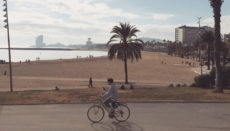

Sorry, the comment form is closed at this time.